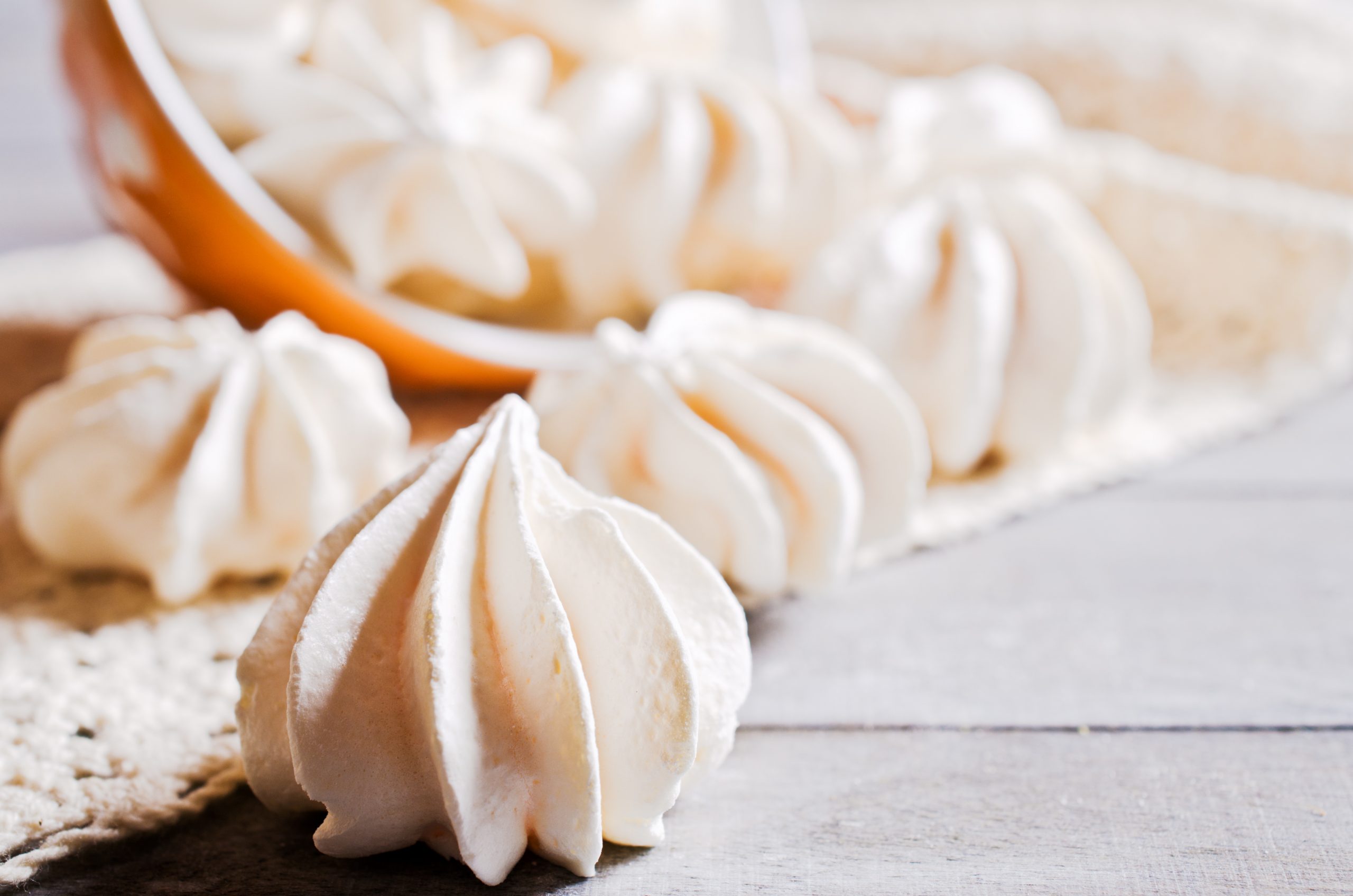Ingredients:
4 egg whites200g caster sugar (or icing sugar for a finer texture)
1 pinch of salt
1 teaspoon lemon juice (optional, to stabilize the whites)
Instructions:
Preparation of the egg whites:
Preheat the oven to 100°C (gas mark 3) for gentle cooking.
Separate the whites from the yolks (be careful not to leave traces of yolk in the whites).
In a large bowl, beat the egg whites with the pinch of salt on medium speed.
Adding sugar:
When the whites start to foam, gradually add the sugar while continuing to beat. Increase the beater speed as you go.
Continue beating until the whites become firm, shiny, and form "beaks" when you remove the whisk (lemon juice can be added at this time to stabilize the meringue).
Shaping the meringues:
On a baking sheet lined with parchment paper, place small piles of meringue using a piping bag or spoon, depending on the shape you want to make.
You can also create more sophisticated shapes by using different sockets.
Cooking:
Bake the meringues for about 1h30 to 2h, making sure they don't brown. The meringue should be crispy on the outside and fudgy on the inside (for completely dry meringues, increase the baking time).
Let them cool in the oven turned off to prevent them from softening with a sudden change in temperature.
History of Meringue:
meringue, mixture of stiffly beaten egg whites and sugar that is used in confections and desserts. The invention of meringue in 1720 is attributed to a Swiss pastry cook named Gasparini.
Meringues are eaten as small “kisses” or as cases and toppings for fruits, ice cream, puddings, and the like. Shapes are piped onto a baking sheet through a pastry bag and dried out thoroughly in a slow oven. They are not ordinarily browned but remain an ivory colour. Vacherins and schaumtorten are plain meringue shells; dacquoise is a meringue with ground nuts and cornstarch added. Italian meringue, in which the sugar takes the form of a hot syrup, is used to cover puddings and ice creams.
In the United States, a soft, moist meringue is used to top pies, especially lemon meringue pie. Another famous American meringue dessert is baked Alaska: a hard-frozen block of ice cream is placed on a layer of spongecake, and the whole is covered with uncooked meringue, and quickly browned in a hot oven and served immediately, so that the meringue is warm but the ice cream still frozen.

Comments
Post a Comment